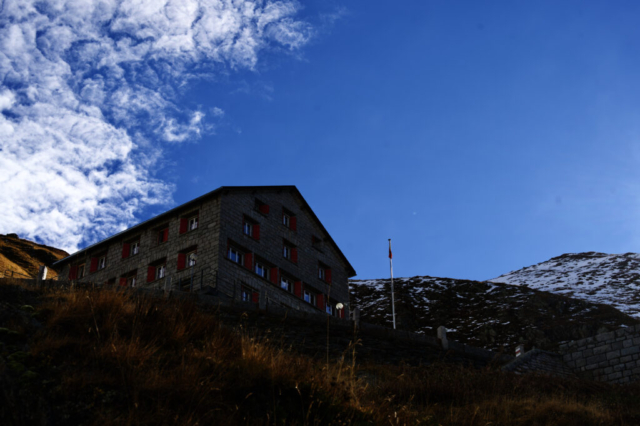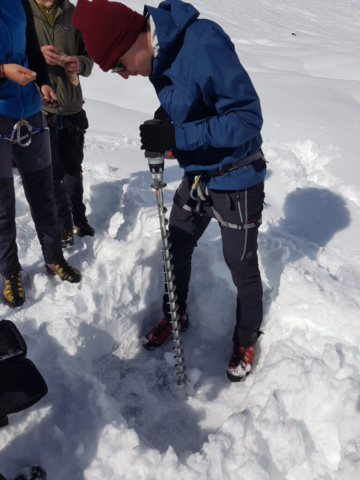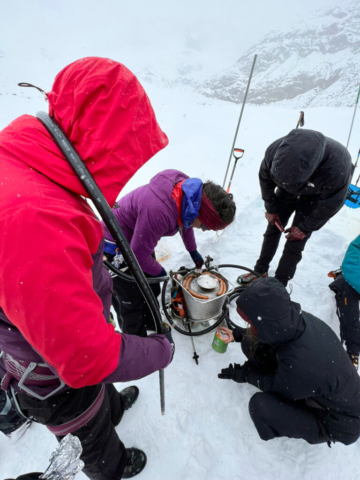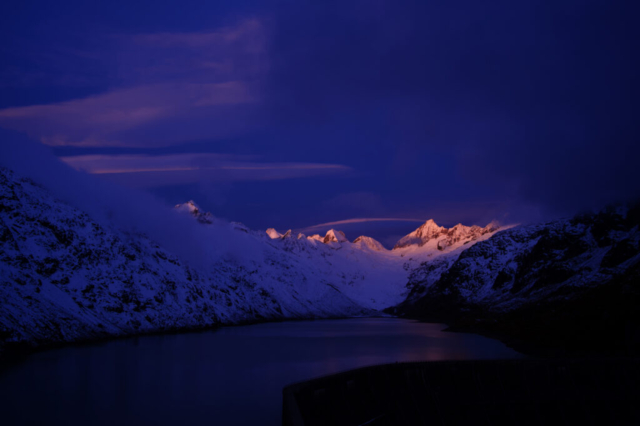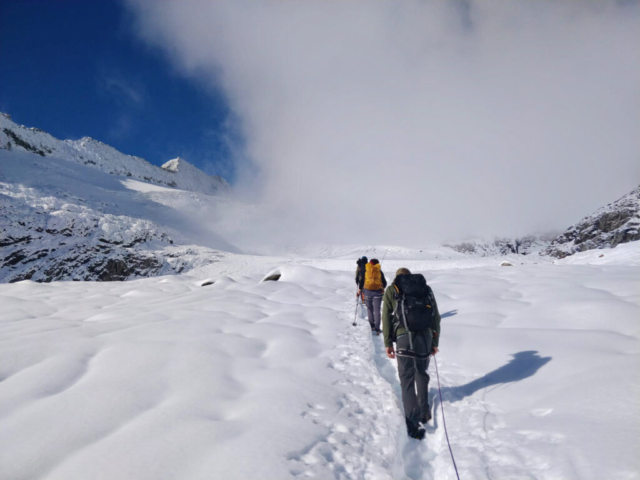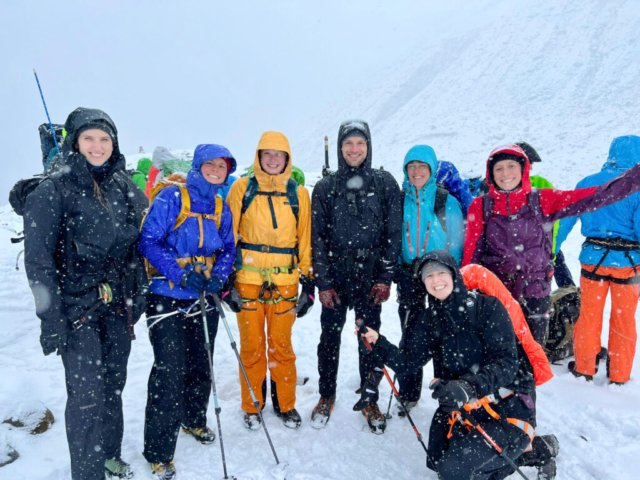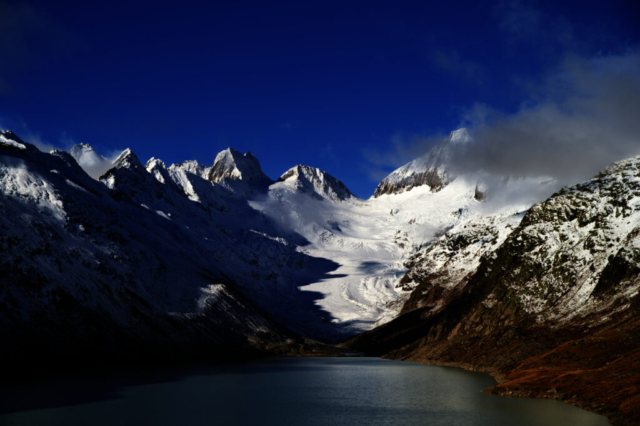
How the weather spoiled our plans: Student fieldwork on the Oberaar Glacier
The students of the master’s course GEO 851 went to the Oberaar Glacier in the Bernese Alps. The aim is to learn about the mass balance of a glacier. At this three-days fieldtrip at the end of September we could make own measurements, analyze them and include them in our final report and presentation.
Friday in the late afternoon we arrived at the Berghaus Oberaar at 2350 m above sea level. In the light of the setting sun, we did safety training by learning about dangers on a glacier, how to rope up and what we could expect on our field trip onto the glacier the next two days.
Field measurements
Last year’s class of GEO 851 of drilled stakes into the ice at five sites at different elevation of the glacier. Our task was to determine how much ice melted since last year by measuring how deep the stake of last year was still buried in the ice. Afterwards, we made new holes into the ice to install new stakes using a steam-driven, mechanical drill and the so-called “Heucke” drill. By heating up the Heucke with gas and heating up water, we get water vapor at the end of a long hose. This allows us to melt a hole into the ice. At lunch time we could even warm some sausages on the Heucke.
Beside the determination of the ablation of the glacier, we also wanted to measure the accumulation by making snow pits. But due to the dry winter and the extremely warm summer conditions, there was no accumulation left this year. At least, we could test some basic density measurements with the fresh snow from the last days.
Changing weather as a challenge for field work
On Saturday morning the weather quickly changed from a beautiful atmosphere to a cloudy sky and later even to a small snowstorm. When we were standing in front of the glacier, we had to put up our hood and we geared up. We had to walk through a thick blanket of snow that covered the glacier for a week. This made it exhausting for the first team walking in the front to build a safe path. Because of the amount of snow, we could only find two sites on that day. But everyone was able to keep up – even the Japanese film crew who were shooting a documentary on climate change and glacier melt. Finally, in the late afternoon it started to rain, but fortunately the great dinner and the board games in the evening warmed us up and prepared us for the next day.
The next day the sunny weather promised for better conditions to go on the glacier. A “speed team” of fast and ambitious people went up to the highest site of the ablation area to collect data from last year’s stake and bury a new one. The others went to the lowest site which we couldn’t find the day before in the snow. In T-shirts and with sunglasses on our happy faces, we completed the fieldwork on the sunny Sunday.
Overall, we learnt a lot about safety on glaciers and how changing weather conditions can make a difference in carrying out fieldwork. And finally: how much fun it can be to work with colleagues in a beautiful landscape!
Ariane Dieth


